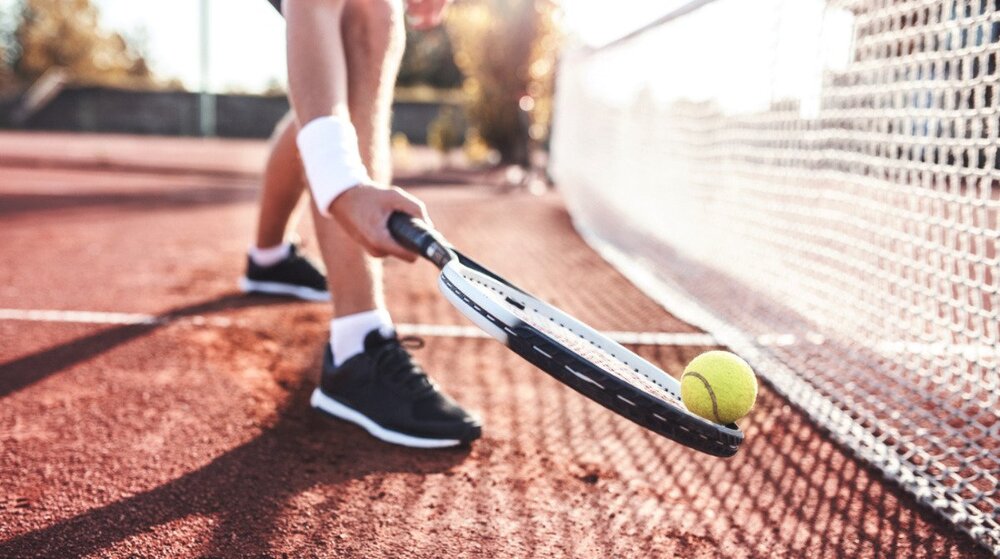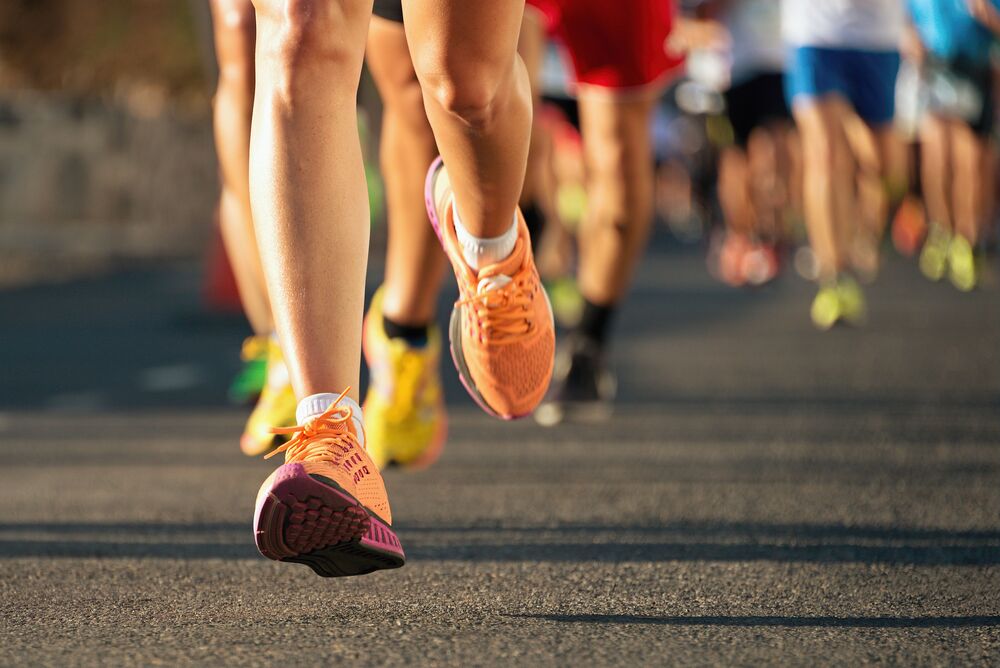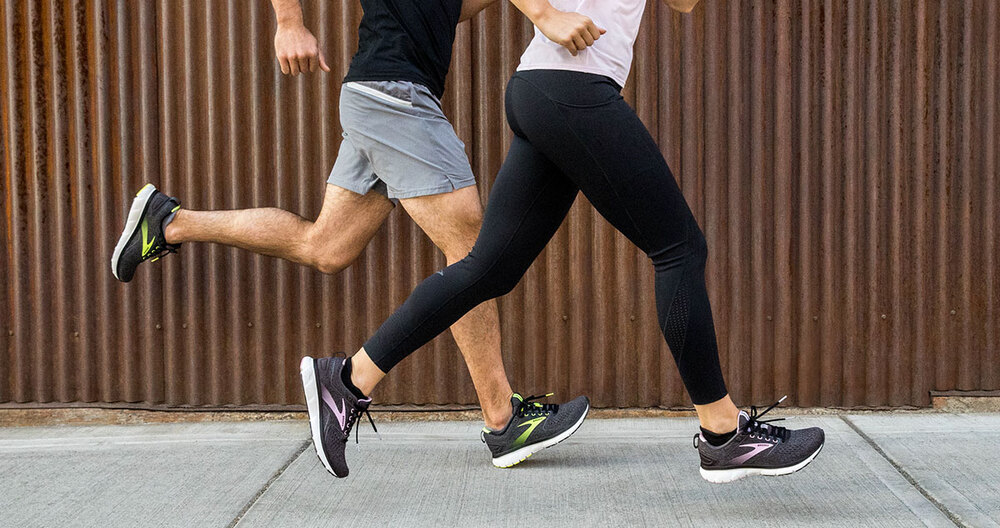Why Wearing Proper Athletic Footwear Is Important
Most of us caught ourselves using the same pair of sneakers for a bunch of different activities at some point in our life. A sneaker is a sneaker, what could be so peculiar about it, right? Running, walking, jumping, dancing - you name it, that one pair is good for everything. Well, it's time for a reality check. Using one-pair-fits-all sports shoes is like cutting cooking ingredients with an axe — it's simply not the most optimal way of doing things.

The Role of Dedicated Footwear
In the world of sports wearing dedicated footwear can make a world of difference. Imagine wearing your comfy running shoes on a soccer field or donning those heavy basketball shoes for a marathon. Sounds ridiculous, right? That's because each sport has unique demands, and the footwear designed for them reflects these nuances.
Footwear engineers work closely with orthopedic specialists and sporting experts to come up with designs that would tackle all the challenges a particular sport imposes on a person. As such, the footwear for these activities is designed to cater to these specific needs:
Running Shoes: These are designed specifically for forward movement. They have thick, cushioned soles to absorb the shock of each stride. A good running shoe will also have a flexible forefoot for ease of motion and a firm heel counter for stability.
Basketball Shoes: These shoes are designed to handle intense multi-directional movements, including jumping. They often have a high-top design to provide extra ankle support and stability, and their soles are typically flat for optimal balance.
Tennis Shoes: Tennis involves a lot of lateral movement, quick shifts in direction, and playing on different types of surfaces. Tennis shoes, therefore, have a more flexible sole, a well-supported ankle area, and a tougher toe area for the frequent forward lunges.
Soccer Cleats: Soccer requires running, sudden changes in direction, and kicking. Cleats for soccer have studs on the bottom to allow for a better grip on grassy fields, a quality that is essential in a sport that involves a lot of swift, agile movements. The upper part of the shoe is designed to aid in ball control.
Hiking Boots: Hiking involves traversing uneven terrains, often carrying heavy backpacks. Hiking boots are therefore designed with sturdy materials to withstand rough conditions, provide ankle support, and prevent injuries. They also have deep treads for better grip on rocky or slippery surfaces.
Cycling Shoes: Cycling shoes are designed to optimize power transfer from the foot to the pedal. They have stiff soles and are often equipped with a mechanism to attach them to the pedals, allowing for more efficient energy use.
There are two primary benefits of wearing suitable athletic footwear: safeguarding against injuries and enhancing performance.

Injury Prevention
Wearing the correct sports shoes can serve as a protective measure against possible injuries. High-impact activities put a lot of strain on your feet, which can lead to joint discomfort or stress fractures if you're not adequately protected. The right sports shoes can offer essential support, warding off potential injuries. Research in the Journal of Sports Sciences indicates that athletes who wear suitable footwear have fewer injuries. Here's how shoes can help you avoid injuries:
- Shock Absorption: Superior athletic shoes incorporate cushioning materials (like ethylene-vinyl acetate and polyurethane) in their midsoles to soak up the impact when your foot strikes the ground. This lessens the pressure on your feet, ankles, knees, and hips, helping to avert injuries like shin splints and stress fractures.
- Stability and Support: Athletic shoes give your feet stability, keeping proper alignment and balance during movement. For instance, running shoes usually contain arch supports catering to different arch types (high, medium, low), while shoes for sports involving lateral movements, like basketball and tennis, offer additional ankle support to prevent sprains.
- Traction: Athletic shoes' soles are engineered to provide grip, preventing slips and falls on various terrains. This is particularly important in sports like soccer or trail running, where the surfaces can be uneven or slippery.
- Fit and Comfort: A shoe that fits well can prevent numerous issues, including blisters, bunions, and problems with toenails. Shoes that are too tight can cause foot pain and exacerbate conditions like hammertoes and neuromas, while shoes that are too loose can lead to instability and accidents due to slipping out of the shoe.
- Prevention of Overuse Injuries: By providing your feet with the specific type of support they need for your chosen activity, you can help prevent overuse injuries. These occur when the same set of muscles, tendons, and bones are used repetitively without adequate rest, leading to conditions like Achilles tendonitis and plantar fasciitis.

Performance Improvement
Many factors should align to provide a base for success. While nobody will say you owe it to a pair of shoes, it very well might be the very thing that tips the scales in your favor. The right athletic footwear can significantly enhance your performance. They can improve biomechanics, provide better stability, and optimize energy transfer during movement. In fact, research has shown that athletes who wore proper shoes experienced improved running economy and reduced muscle fatigue. Here is what dedicated footwear brings to the table to boost your sporting results.
- Improved Efficiency: Athletic shoes are designed to maximize the efficiency of your movements. As we’ve already mentioned, running shoes are built to optimize forward motion while tennis shoes are designed for quick lateral movements. This means that with the right shoes, you can move more effectively and waste less energy, resulting in better efficiency.
- Better Grip and Traction: The soles of athletic shoes are designed to provide optimal grip and traction on various surfaces, whether it's the rubber basketball court or a slippery trail in cross-country running. This allows you to move confidently and swiftly without fear of slipping or falling, thus enhancing your speed and agility.
- Energy Transfer: Athletic footwear is designed to facilitate the efficient transfer of energy, especially from the foot to the ground. It can be particularly noticeable in sports that involve running or jumping. A good athletic shoe will enhance this energy transfer, allowing for more powerful movements and less fatigue over time.
- Comfort: Lastly, never underestimate the power of comfort in boosting performance. A comfortable shoe will allow you to focus entirely on your game or activity without distractions caused by foot pain or discomfort.
Conclusion
As you can see, by underestimating the role of wearing proper athletic footwear, you deprive yourself of a great assistant. Unfortunately, we usually notice the effect of our footwear only when it’s negative. If your shoes are too tight, you notice it right away. But when they fit perfectly, you may feel like you are not wearing any footwear at all. It is through these seemingly invisible benefits that your footwear helps you achieve your goals. It won’t conjure a second wind when you are out of breath, and it won’t make you run twice as fast. However, it will do a thousand tiny things that, when combined, will allow you to fulfill your true potential. Choose your footwear attentively, and it will become your trusted companion.
FAQs
Can wearing the wrong athletic shoes lead to injuries?
Yes, wearing the wrong type of athletic shoes can lead to injuries. Shoes that don't fit well or don't provide the right support can lead to blisters, corns, calluses, heel pain, sprains, fractures, and long-term injuries like plantar fasciitis and Achilles tendonitis.
How often should I replace my athletic shoes?
The general rule of thumb is to replace your athletic shoes every 300-500 miles of use, or approximately every six months. However, this can vary based on the type of activity, the intensity of your workouts, and the signs of wear and tear on your shoes.
Can I wear running shoes for all types of sports?
Not all sports shoes are created equal. Different sports have different requirements for foot movement and impact, so it's crucial to wear the appropriate shoe type for each sport.
EXPLORE POPULAR ARTICLES
-
How to Break In Running Shoes [Expert Guide]
Jun 20th 2024It's rare when a couple of short walks around the block is enough for a runner to break in a new pai
-
goodr sunglasses: Choosing the Perfect Pair
May 24th 2024Runners and outdoor fitness enthusiasts know how important good sports sunglasses are. They prote
-
Selecting the Best Running Shoes for Heavy Runners
Mar 28th 2024Running ranks on the list of activities anyone can enroll in. You don’t need any specific equipme



![How to Break In Running Shoes [Expert Guide] How to Break In Running Shoes [Expert Guide]](https://cdn11.bigcommerce.com/s-eeul26hjka/images/stencil/160w/uploaded_images/how-to-break-in-running-shoes.jpg?t=1718884434)

